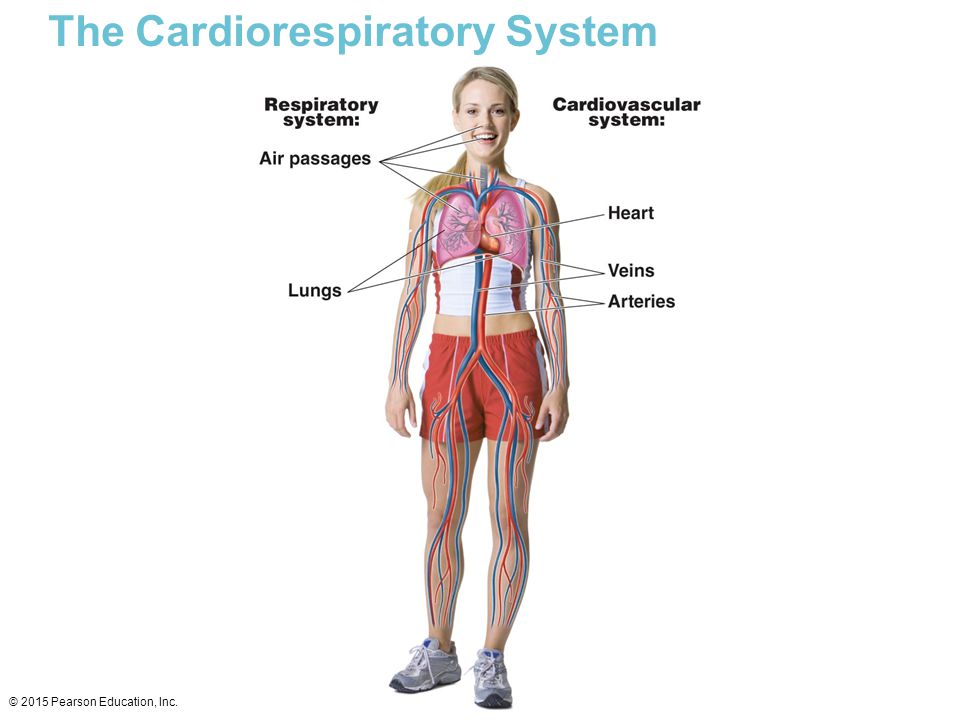Medication Guide
(Medication Guide)
Introduction
WHO ranked major depressive disorder (MDD) as the third leading cause of disease burden, projected to be the leading cause of disease burden by 2030. Depression, in general, is the first-ranking cause of disability worldwide. It affects individuals across all populations, ages, and ethnicities. Still, it is significant among vulnerable populations like the elderly, youth, and individuals with physical illnesses like obesity, diabetes, and other chronic conditions. Older adults are at an increased risk of developing MDD, a typical cause of geriatric psychiatric disorders and a significant risk factor for disability and mortality among older patients (Zenebe et al., 2021). Depression is the most common mental health issue among older adults despite being undiagnosed in half of the cases. The paper address major depressive disorder among older adults, including causes, symptoms, diagnosis, and medications. (Medication Guide)

Major Depressive Disorder Causes and Symptoms
MDD etiology is multifactorial, including environmental, biological, genetic, and psychosocial factors. MDD is mainly attributed to neurotransmitter abnormalities, particularly dopamine, norepinephrine, and serotonin. It is indicated by the use of various antidepressants like selective serotonin receptor inhibitors, serotonin-norepinephrine receptor inhibitors, and dopamine-norepinephrine receptor inhibitors in treating depression (Bains et al., 2022). MDD is highly prevalent among mental health conditions, with a lifetime prevalence of around 5 to 17% and an average of 125. The disease is more common among women than men, almost double, and among individuals without close interpersonal relationships, such as those who are divorced, separated, or widowed, which is the case among many older adults (Bains et al., 2022). Most people with MDD present with symptoms including pervasive low and depressed mood, decreased interest and enthusiasm in previously pleasured activities, guilt and worthlessness feelings, low energy, poor or impaired concentration, and changes in appetite (Bains et al., 2022). These individuals also experience psychomotor retardation, agitation, sleep disturbances, and suicidal thoughts. (Medication Guide)
Figure 1: MDD causes and symptoms
MDD Diagnosis for the Elderly
Older people are a valuable resource in society, but many age-related actors influence their health and well-being by exposing them to multiple physical and mental illnesses. The elderly population is growing, and it will be the case going into the future, which has extensive economic, social, and health consequences in the world and the United States. The increasing aging population is attributed to reduced mortality and fertility rates and improved quality of life over the past two decades, leading to increased life expectancy. In 2019, older people aged 60 years and over were 1 billion, and the number will rise to 1.4 million by 2030 and to over 2.1 billion by 2050, and by then, 80% will live in low- and middle-income countries (Zenebe et al., 2021). With the increasing aging population, the incidence of mental health problems is also expected to increase, with depression being the most prevalent disorder. This population is categorized as vulnerable because of the high disease encounter associated with aging and the likelihood of experiencing multiple conditions that impede their functioning, including mobility, which is a barrier to healthcare access. (Medication Guide)
Figure 2: Depression prevalence by age
MDD among older adults is diagnosed through comprehensive psychiatric evaluation of the individual and mental health examination. The practitioners conduct a history and physical assessment, including medical history, family history, social history, alcohol and substance use history, and psychiatric history (Bains et al., 2022). Among older adults, collateral information from family members or friends is immensely important in psychiatric evaluation because, in some cases, older adults experience cognitive decline and judgement impairment. A comprehensive physical examination, including a neurological examination, is conducted to help diagnose and rule out any root cause, organic or medical, of depressive symptoms. The diagnosis follows the ICD-10 or the DMS-5 criteria. According to the DMS-5 criteria, five of the following symptoms must be present for a diagnosis to be made: difficulty sleeping, loss of interest or pleasure, feelings of inadequacy or helplessness, fatigue or erratic energy, difficulties concentrating or listening intently, fluctuations in appetite or weight, psychomotor issues, suicidality, and depressed mood. (Medication Guide)
Medication Treatment Options
Various modalities, including pharmacological, psychotherapeutic, interventional, and lifestyle changes, are used to treat major depressive disorder. Medication treatment includes FDA-approved medications, including all antidepressants, which are equally effective but with varying side effects profiles. Selective serotonin reuptake inhibitors (SSRIs) are the first line of treatment and include fluoxetine, sertraline, citalopram, paroxetine, and fluvoxamine (Bains et al., 2022). However, SSRIs can increase agitation and anxiety and cause indigestion, diarrhea or constipation, appetite and weight loss, dizziness, dry mouth, or blurred vision. Serotonin-norepinephrine reuptake inhibitors (SNRIs) are often used among patients with comorbid pain disorders (Bains et al., 2022). SNRIs include venlafaxine, milnacipran, duloxetine, and levomilnacipran. However, these drugs can cause nausea, dry mouth, dizziness, headache, and excessive sweating. (Medication Guide)
Patients can also be prescribed serotonin modulators like vilazodone, trazodone, and vortioxetine (Bains et al., 2022). Despite their high effectiveness, serotonin modulators can lead to gastrointestinal adverse reactions, central nervous system adverse reactions, bleeding, sexual dysfunction, and hyponatremia. Possible treatment also includes atypical antidepressants like bupropion and mirtazapine, often prescribed as augmenting agents when an individual develops sexual side effects after using SSRIs or SNRIs (Bains et al., 2022). Common side effects of atypical antidepressants include lightheadedness, dizziness, and dry mouth. Additionally, mood stabilizers and antipsychotics help improve antidepressant effects (Bains et al., 2022). However, the patient can experience blurred vision, dry mouth, drowsiness, muscle tremors, and weight gain after taking mood stabilizers and antipsychotic medications. (Medication Guide)
Figure 3: Antidepressants commonly used to treat MDD
Medication Considerations of Medication Examples Prescribed
Older adults are vulnerable individuals, and most are experiencing multiple comorbidities and taking multiple drugs simultaneously. Therefore, optimizing drug therapy for older adults is crucial to ensure their safety and reduce the risk of medication-related complications. Prescribing medication among older adults is a complex process, and the practitioner has to consider the patient’s physiological status, drug effectiveness and toxicity, and potential side effects (Rochon & Schmader, 2019). Avoidable adverse drug events should always be evaluated when prescribing for older adults. The practitioner has to consider and review current drug therapy, discontinue ineffective therapy, review avoidable drug-drug interaction, and appropriate use of prescribed drugs or medication adherence. (Medication Guide)
SSRIs are commonly prescribed to treat MDD and used as first-line treatment. However, safety considerations for prescribing SSRIs are paramount to avoid complications like adverse drug events, drug-drug interactions, disabling side effects, and fatality. When prescribing SSRIs or selecting a specific SSRI, it is imperative to consider common possible complications like vascular events, which are life-threatening, patients at a higher risk of cardiovascular risk, and relevant comorbidity and co-medication (Mortensen & Andersen, 2022). Additional considerations include potential interaction with particular foods and drinks and the presence of diseases like diabetes, epilepsy, and kidney disease. The practitioner should evaluate current drug therapy because SSRIs can interact with some over-the-counter painkillers and herbal remedies. (Medication Guide)
Monitoring Labs and Comorbid Medical Issues
To date, there are no diagnostic laboratory tests available to diagnose MDD. However, labs can be used to exclude other medical illnesses that present symptoms as MDD, including complete blood cell (CBC) count, thyroid tests, fasting blood glucose tests, and folate and vitamin B12 tests. These lab tests are a vital consideration, especially for individuals experiencing multiple comorbidities, to determine the presence of depressive symptoms by excluding potential links to other illnesses presenting as MDD (Wainberg et al., 2021). The comorbidity of MDD with chronic illnesses like diabetes, obesity, and eating disorders should be monitored to determine how the pathologic processes associated with the diseases interact (Almeida et al., 2020). Other comorbid medical issues with MDD include psychotic disorders, OCP, anxiety disorders, and substance use. Their association with MDD must be evaluated to develop a comprehensive patient treatment plan and education plan. Identifying comorbidities is vital for accurate diagnosis and developing treatment and management strategies. (Medication Guide)
Special Considerations
When working with MDD patients, it is vital to consider laws like the Mental Healthcare Act of 2017 that explicitly describes the rights of individuals with mental illnesses, specifying ethical and legal responsibilities practitioners and the government have (Bipeta, 2019). The law corresponds with the fundamental rights of human beings and ethical principles, including autonomy, non-maleficence, beneficence, justice, confidentiality, informed consent, and boundary violations. Ethical issues and dilemmas associated with autonomy, respect of persons, informed consent, and beneficence can arise when working with MDD patients, hence the need for ethical imperatives like ensuring confidentiality and privacy, respecting autonomy and the law, demonstrating compassion, beneficence, and promoting justice, honesty, and fidelity (Bipeta, 2019). For instance, older people with cognitive decline need surrogates or caregivers to offer informed consent and address autonomy and confidentiality issues.
Cultural considerations are imperative in treating depression, especially for ethical or racial minorities. The epidemiology of depression varies across various racial and ethnic groups. This variability is due to contextual factors in the different groups, including cultural beliefs and practices, cultural adaptations, and intersectionality (Cardemil et al., 2020). Moreover, every culture looks at mental health differently, and practitioners should consider these differences in treating depression. Social determinants of health, including socio-economic status, family relationships, educational attainment, social isolation, and supportive relationships, should be considered when treating MDD because of their influence on development and progression of depression and healthcare access and service utilization for depression. (Medication Guide)
Figure 4: Ethical issues in psychopharmacology
Resources to Follow Up for more information
Multiple resources available in the community can offer more information regarding depression, including the National Alliance on Mental Illness (NAMI), Anxiety and Depression Association of America (ADAA), National Suicide Prevention Lifeline, American Psychological Association (APA), National Institute of Mental Health (NIMH), and Centers for Disease Control and Prevention (CDC) Division of Mental Health. These resources or institutions publish information on their websites accessible to the general public in search of further information on depression. The institutions are on a mission to reduce mental health concerns’ impact on American communities, hence providing a wealth of information and services accessible to all. (Medication Guide)
Prescription Examples
The patient will initially be prescribed FDA approved SSRIs, including citalopram, escitalopram, and fluoxetine.
Prescription 1
Date of Issue: March 23, 2023
Patient Name: N.D.
Drug Name: Citalopram
Dosage Form: Tablet
Quantity Prescribed: 20 mg PO qDay, increasing to 40 mg/day after 1 week
Clinician Name: J.M.
Prescription 2
Date of Issue: March 23, 2023
Patient Name: N.D.
Drug Name: Escitalopram
Dosage Form: Tablet
Quantity Prescribed: 10 mg PO qDay; may increase to 20 mg/day after 1 week
Clinician Name: J.M.
Prescription 3
Date of Issue: March 23, 2023
Patient Name: N.D.
Drug Name: Fluoxetine
Dosage Form: Tablet
Quantity Prescribed: 20 mg PO qDay initial, and consider gradual increase after several weeks by 20mg/day, not exceeding 80 mg qDay
Clinician Name: J.M.
Conclusion
Major depressive disorder is a disabling illness among older adults and a significant contributor to the disease burden. MDD co-occurs with other illnesses, mostly age-related, including diabetes, psychotic disorders, anxiety disorders, and eating disorders, that make MDD treatment and management challenging. Pharmacological treatments effectively address MDD; SSRIs are prescribed as the first-line treatment modality. Considering that older people experience multiple comorbidities and are taking multiple drugs, it is vital to consider potential side effects, drug interactions, adverse events like complications, medication adherence, and drug effectiveness and appropriateness when prescribing medication for MDD. Legal, ethical, cultural, and social actors influence MDD development, progression and treatment perception, and these must be considered when working with MDD patients. More information on MDD can be obtained from CDC, ADAA, APA, NIMH, and NAMI websites and online publications. (Medication Guide)
References
Almeida, S. S., Zizzi, F. B., Cattaneo, A., Comandini, A., Di Dato, G., Lubrano, E., Pellicano, C., Spallone, V., Tongiani, S., & Torta, R. (2020). Management and Treatment of Patients With Major Depressive Disorder and Chronic Diseases: A Multidisciplinary Approach. Frontiers in psychology, 11, 542444. https://doi.org/10.3389/fpsyg.2020.542444
Bains, N., Abdijadid, S., & Miller, J. L. (2022). Major depressive disorder (nursing). In StatPearls [Internet]. StatPearls Publishing.
Bipeta R. (2019). Legal and Ethical Aspects of Mental Health Care. Indian journal of psychological medicine, 41(2), 108–112. https://doi.org/10.4103/IJPSYM.IJPSYM_59_19
Cardemil, E. V., Noyola, N., & He, E. (2020). Cultural Considerations in Treating Depression. Handbook of Cultural Factors in Behavioral Health: A Guide for the Helping Professional, 309-321.
Mortensen, J. K., & Andersen, G. (2022). Safety considerations for prescribing SSRI antidepressants to patients at increased cardiovascular risk. Expert opinion on drug safety, 21(4), 467–475. https://doi.org/10.1080/14740338.2022.1986001
Rochon, P. A., & Schmader, K. E. (2019). Drug prescribing for older adults. Dostpuno na https://www. uptodate. com/contents/drug-prescribing-for-older-adults. Pristupljeno.
Wainberg, M., Kloiber, S., Diniz, B., McIntyre, R. S., Felsky, D., & Tripathy, S. J. (2021). Clinical laboratory tests and five-year incidence of major depressive disorder: a prospective cohort study of 433,890 participants from the UK Biobank. Translational Psychiatry, 11(1), 380.
Zenebe, Y., Akele, B., W/Selassie, M., & Necho, M. (2021). Prevalence and determinants of depression among old age: a systematic review and meta-analysis. Annals of general psychiatry, 20(1), 55. https://doi.org/10.1186/s12991-021-00375-x
Do you need a similar assignment done for you from scratch? Order now!
Use Discount Code "Newclient" for a 15% Discount!











